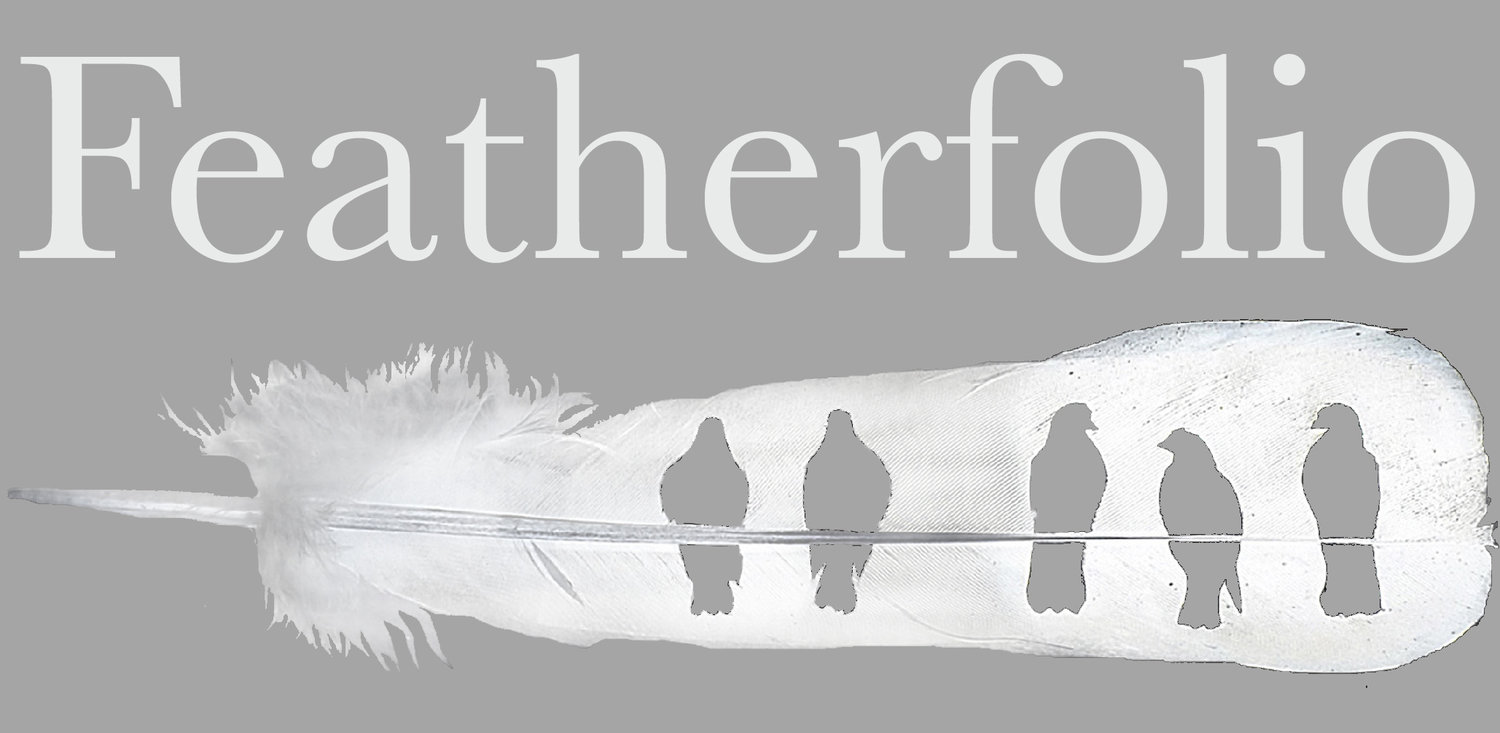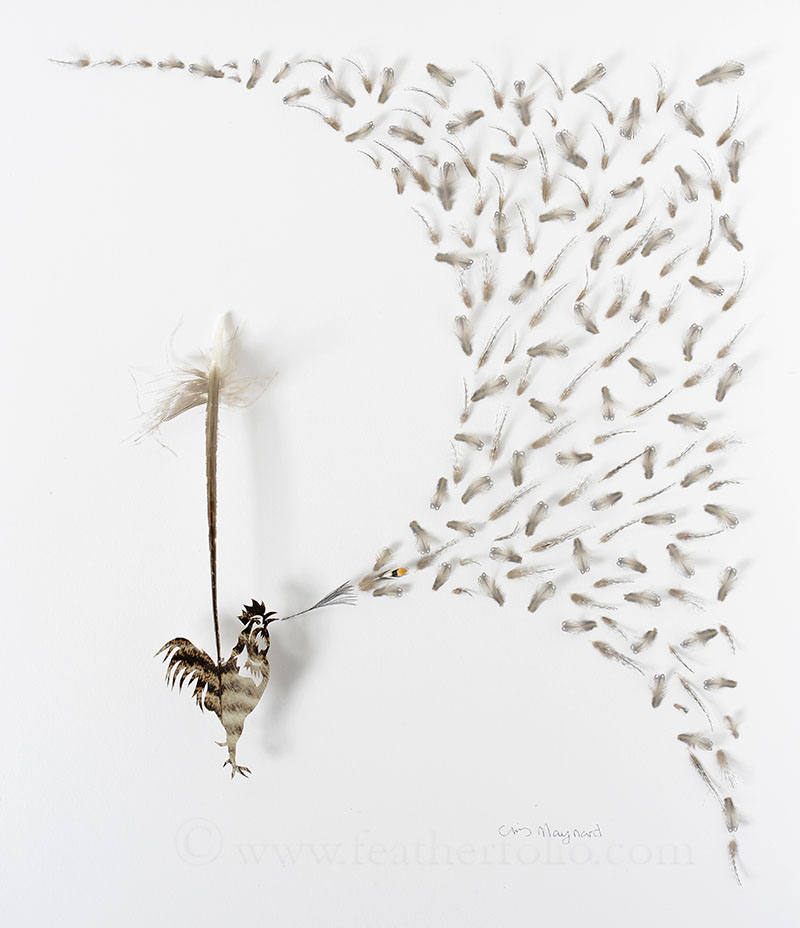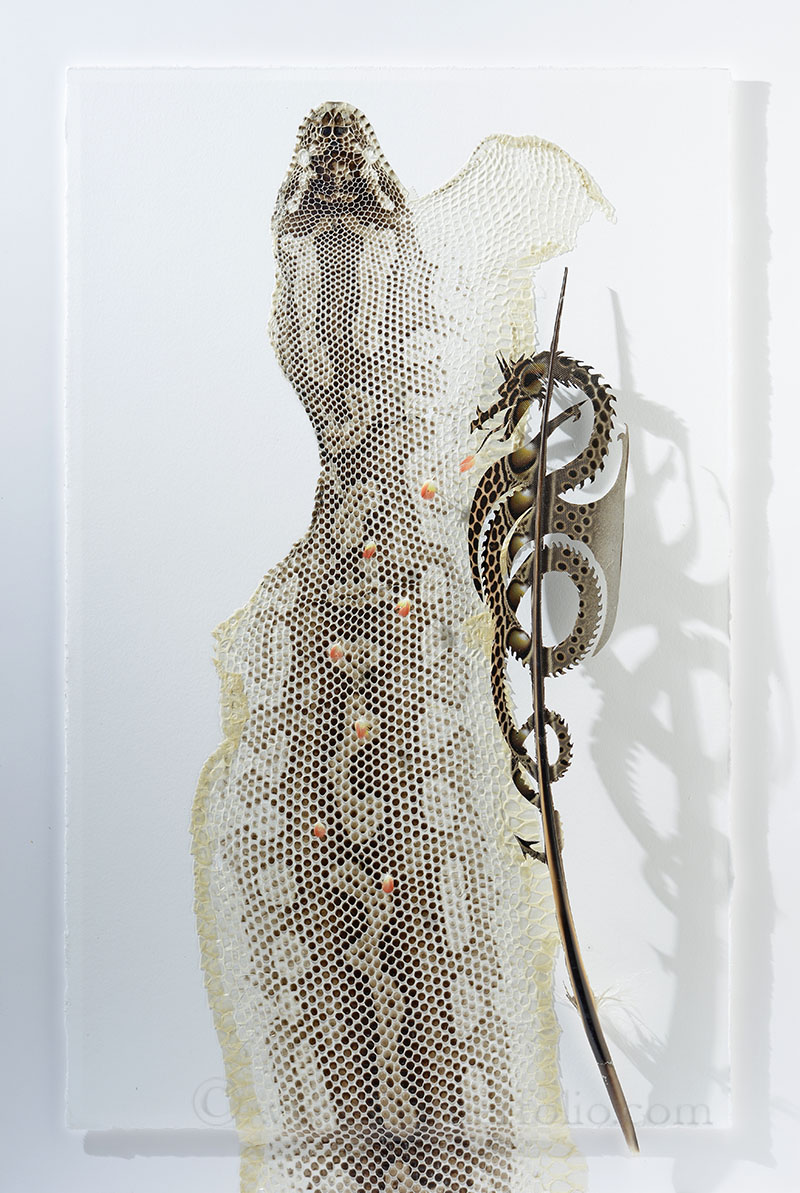In the stop motion video, you can see the progression of placement and cuts. For me, what really stands out is how the feathers and the cutout birds pop out at the end when they are elevated. The shadows give the work an added dimension.
A big piece like this usually comes after making several smaller pieces where the design concepts are tested. It took a while to collect enough of the right feathers—these are all from the right side of the wing of molluccan cockatoos. Some were shed from a pet bird over several years and some shed in a nonprofit rehabilitation sanctuary for parrots.
I often show a playful element in my work. Playfulness allows me to learn new things and skills without being too tense, like the second brood of swallows today that were just off the nest learning to fly. I watched these young ones playing with a feather, catching it in their beaks, dropping it, and picking it up again and again. I bet they were enjoying improving their flying and bug catching skills.




















